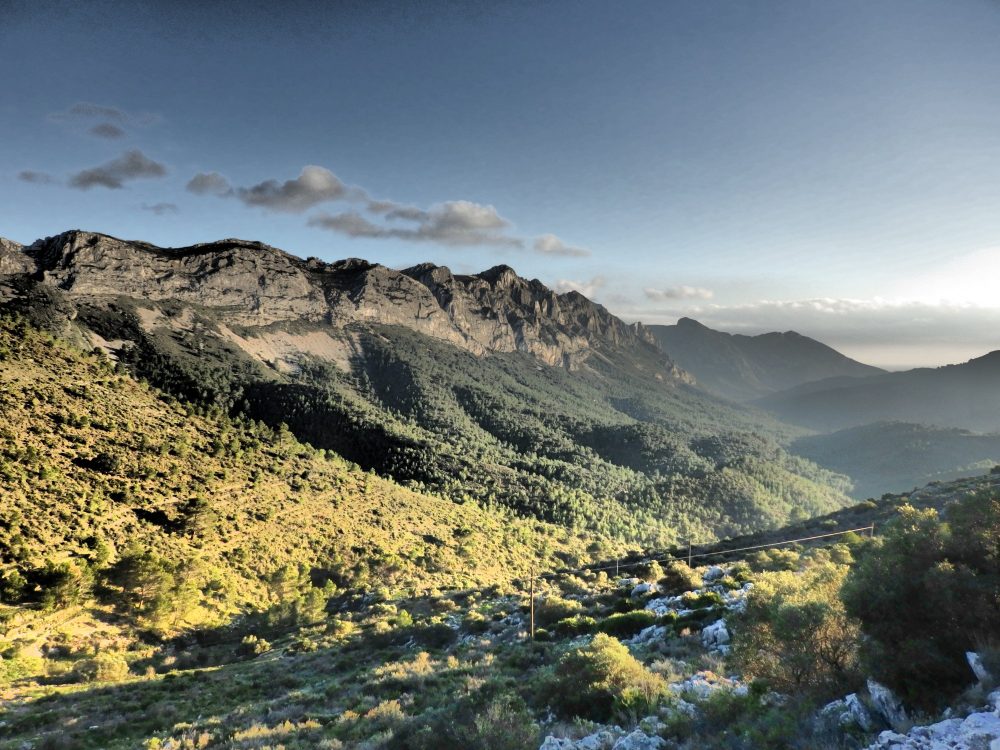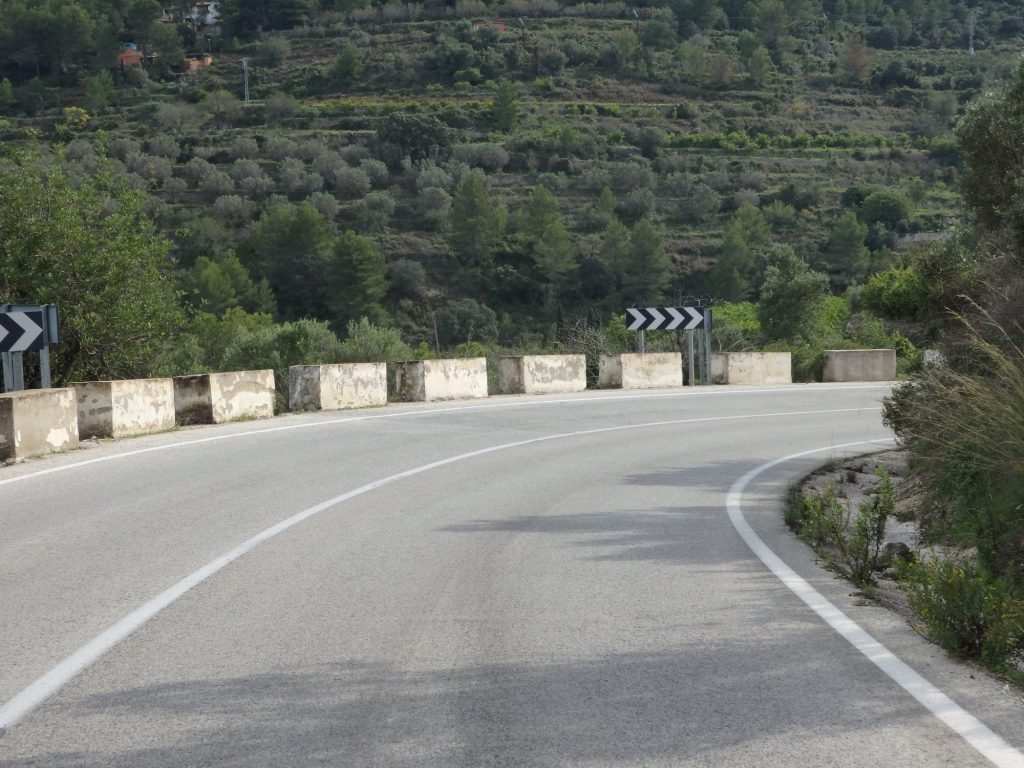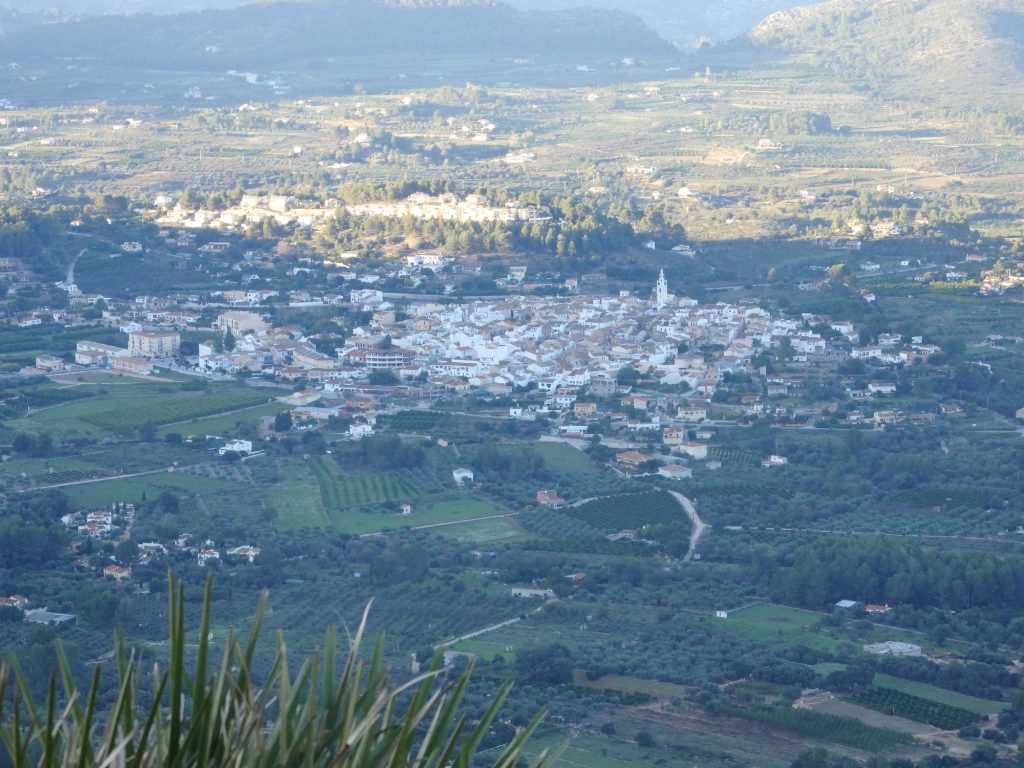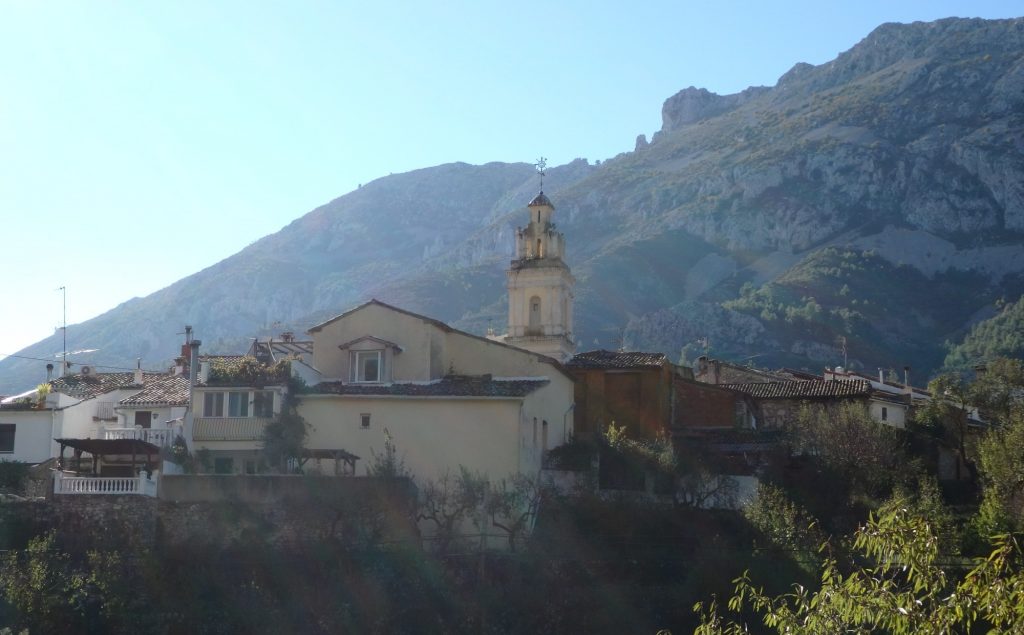Driving Costa Blanca: Some Advice
If you’re ever in the Costa Blanca in Spain, here’s what I’d recommend: get away from the coast! Yes, you can enjoy the beaches and party till the wee hours in the coastal towns, but there’s far more to see inland.

The drive I did the other day, for example, was absolutely lovely. Leaving from Parcent, a small village halfway between Valencia and Alicante, where my in-laws lived for more than 20 years, in a small rented car, I drove along minor routes through the mountains toward the city of Alcoy.
My excuse for going there was to visit the Refugio de Cervantes, an air raid shelter from the Spanish Civil War, which I’ve posted about separately.
Driving for the sake of driving
But this post isn’t about that; it’s about the drive. It turned out that this trip was worth the time just for the drive itself. The distance is less than 60 kilometers, but, if you do it, the drive will take at least two hours—more if you want to stop and take pictures and enjoy the scenery.
The roads in this region, however, are not for the faint-hearted. Narrow, without an inch of space on either side, they twist and turn as they climb up and down mountains.
In many places, despite the fact that a line has been painted down the middle, there isn’t really quite enough room for two cars to pass. I am not exaggerating when I say that you are taking your life in your hands on every turn, since you can’t see around the corner.

Locals, it seems, don’t mind taking that risk, preferring to drive fast and then slam on the brakes as needed. I was fortunate to be about one second away from taking a left-hand turn uphill around a blind curve. A cement mixer was headed downhill and took its right-hand turn too fast, veering halfway into my lane. Given that my side of the road was lined with large concrete blocks edging a cliff, it was very nearly a disaster.
But don’t let any of this scare you away from driving in this region. It really is lovely. The villages are generally perched on the smaller hills: tightly-packed clusters of stone or stucco houses surrounding a church with a tall square tower. The land between the villages is either mountainous—rocky, scrubby, with scattered olive orchards on the lower slopes, bare rock on the heights—or the valleys between those mountains, again either scrubland or orchards: olive, citrus or almond.
Here’s a quick clip of a stretch of road near Parcent, slightly speeded up. The roads are noticeably narrower as you get further up in the mountains, though!
Now picture it without the extra foot or two of space on either side, and with steeper slopes on both sides, and you’ll get a picture of this drive.
Some advice
Some things to keep in mind if you decide to drive in the Costa Blanca:
- Slow down before every turn, which really means: go slow pretty much all the time. If someone comes at you just as you reach a turn, you may have to brake suddenly, so it helps if you’re not going fast to begin with. Remember, there’s nowhere to swerve out of the way.
- Stay to the right, especially on the turns. If you can see around the next turn, as is sometimes possible, and you’re sure that no one’s coming the other way, you can be a little more expansive in your driving and go over the center line. Otherwise, just don’t!
- Slow down to a crawl when you do need to pass someone coming the other way, or you’re liable to lose a side mirror.
- …Which is why when you rent a car you should get the full coverage, so if you do end up with scratches or damage a side mirror, you’ll be covered.
- Stop only where there’s space off the road. Unfortunately, on this route, there are very few of these spots. You can risk stopping in the middle of the road, but only do that where you can see a long way in both directions, so you can hop in and get moving if a car comes along.
- Don’t look at the scenery if you’re driving. It’s just too risky. Take turns driving, switching whenever you find one of those pull-over areas. That way each of you will get to enjoy the scenery for part of the journey.
- In some places, the roadway is painted with arrows indicating that a passing zone is ending and you should move back into your own lane. Please don’t take this to mean that it’s ever okay to pass! Anyone who passes other cars on these roads must have a death wish!
You can get lots more practical advice on driving in Spain at this Discover Cars article: Your Guide to Traveling Around Spain with a Rental Car.
Despite all these warnings, I’d highly recommend taking a drive around the Costa Blanca countryside. It’s too pretty to miss!

Have you ever explored the Costa Blanca or driven roads like this somewhere else? Do you have any additional advice? If so, please comment below!




This road is very similar to the roads around where I live (south of France). I used to be very alarmed driving on them when I first got here but I’m used to them now as I have to use them daily. However even higher up in the mountains near me are some of the world’s greatest drives and they are Scary with capital S! Your tips are very good for drivers not used to these sorts of roads.
I hope you don’t drive like the guy driving that cement mixer! Driving fast on roads like that would require nerves of steel, or else an unshakeable belief in your own immortality!
Crazy driver but a lovely area. We stayed in a similar area in the mountains near Granada but didn’t drive on the roads. We caught the local buses which were another thing altogether!
Taking a bus on roads like that is much scarier! I’d much rather be in control of the wheel on twisty roads!
The hinterland is more interesting than the beaches here in this part of Spain, I think.
I drove from Altea to Guadalest once. It was many years ago, but I seem to remember it was a very nice drive.
The hinterland is more interesting than the beaches here in this part of Spain, I think.
I drove from Altea to Guadalest once. It was many years ago, but I seem to remember it was a very nice drive.
Guadalest is GORGEOUS! Hmm, must find photos so I can write a post about Guadalest! Thanks for the reminder!
Hmmm… I’m not sure that you’ve convinced me to drive this area. It sounds scary, although I do usually leave driving to my husband so that I am free to look around (or nap). The area does look lovely, though.
I know what you mean! But that’s perfect if your husband wants to do the driving! Then you can actually look at the scenery. And you can ask him to stop the car so you can jump out and take a quick picture, then jump back in quickly if another car comes along and he has to get going. My husband also likes to do the driving on roads like that, which is fine with me. Unfortunately I was alone this time.
Oh yes, hairpin turns on cliff-hanging roads from Mallorca to Maui. On the Road to Hana, Pete said 30mph never felt so fast! You’re right about slowing down, particularly when things get narrow. Leave the drama to the locals and get out alive! Fun post – we’ve got the Costa Blanca on our list.
You’ll love it! And I’ll love reading what you post about it!
I love the views, so maybe the drive would be worth it. Then again, maybe I could hitchhike, and leave the driving to someone else. I’d volunteer to be the head navigator 🙂 Thanks for hosting this week. #TPThursday
But if you hitchhiked you might get someone who drives really crazily! I’d rather have some control over the situation!
I’m a very “faint hearted” driver, especially when heights and hairpin curves are involved. However this drive looks like something not to be missed – breathtaking! Maybe we’ll have to hire a local and just sit back and enjoy Costa Blanca instead of white-knuckling it! Hope to visit this area next year.
I guess I’m lucky to have a husband who enjoys driving on roads like this. This time, though, I was driving alone, and I enjoyed the challenge, but wished I could enjoy more of the scenery!